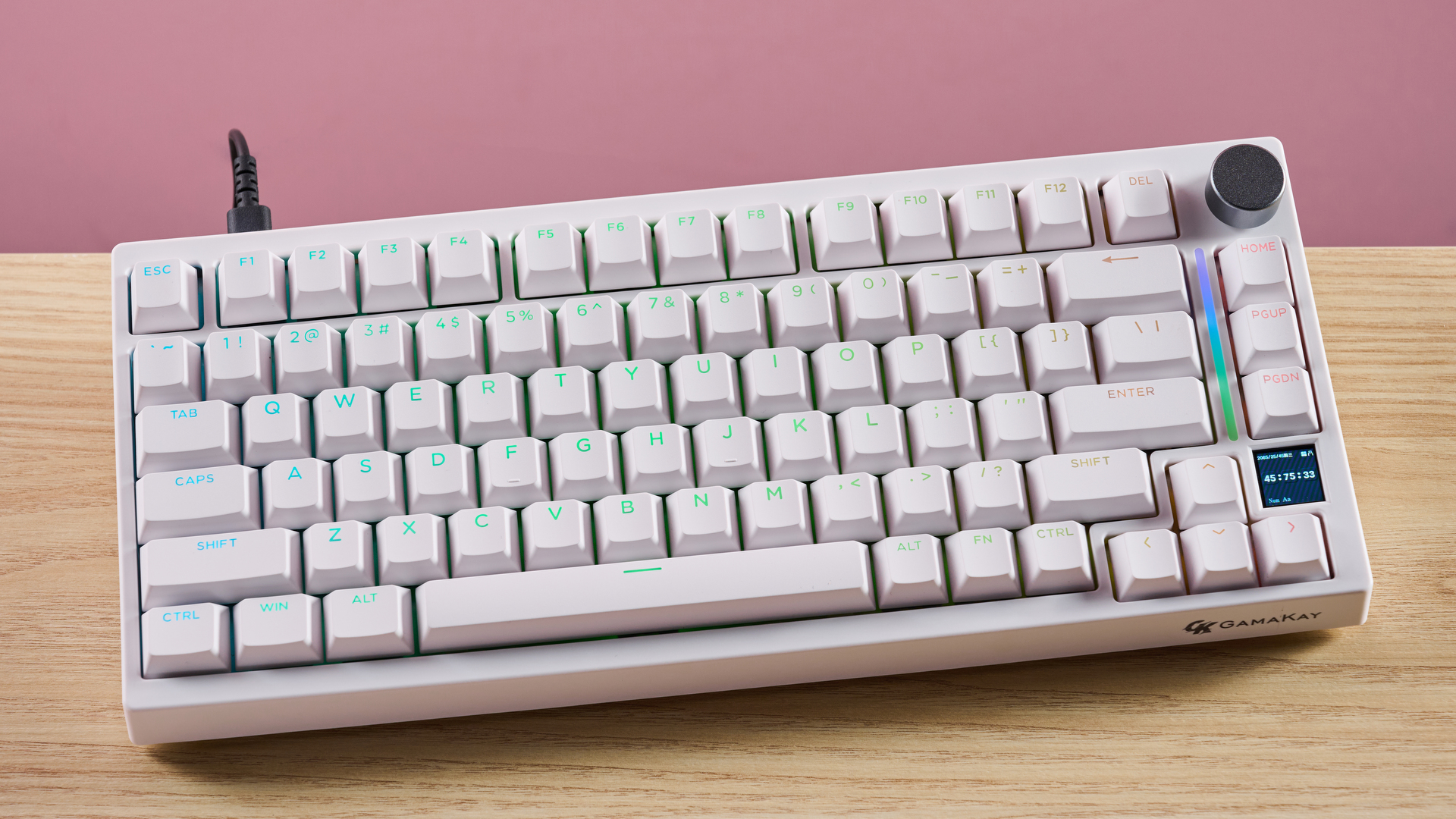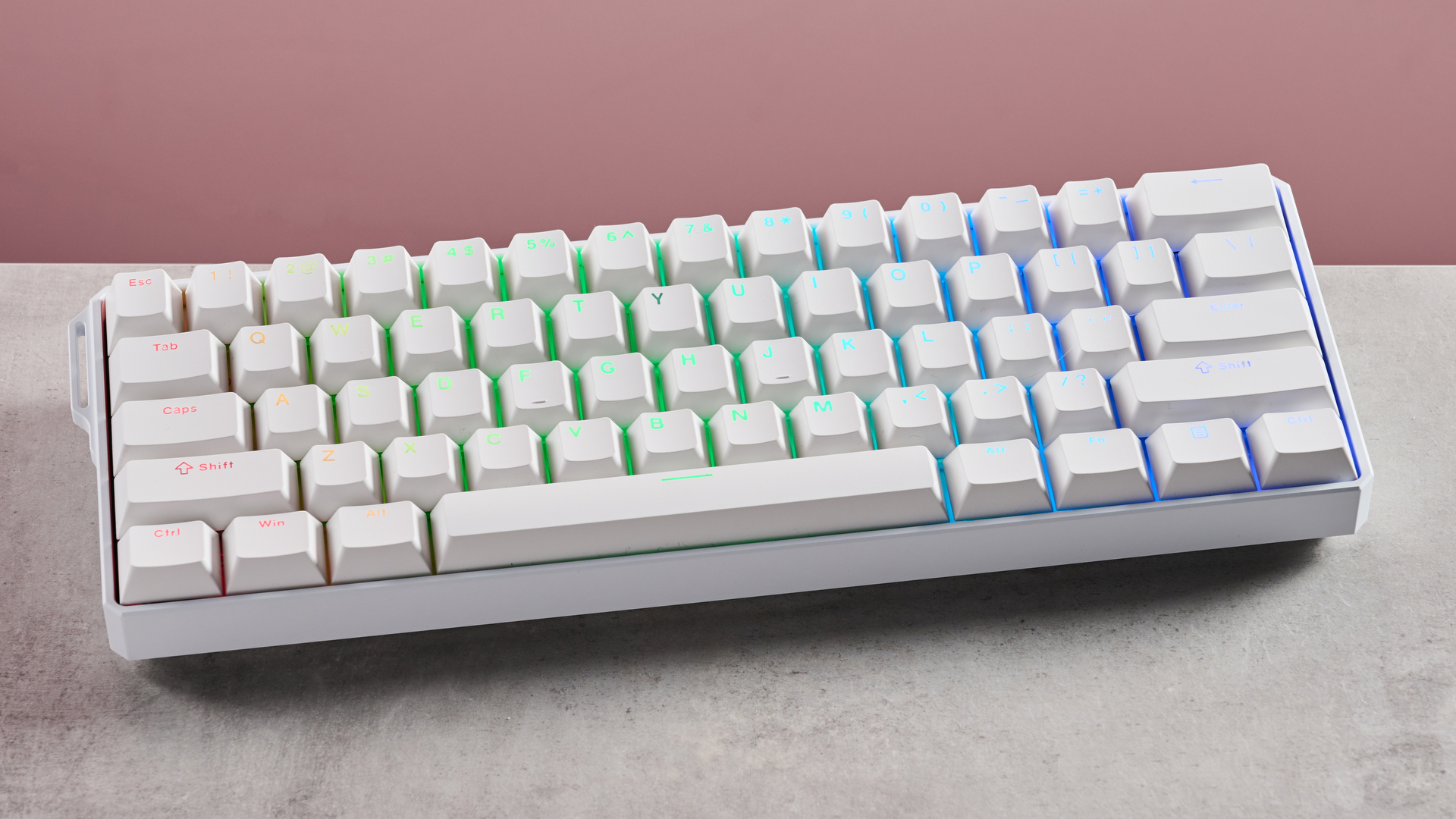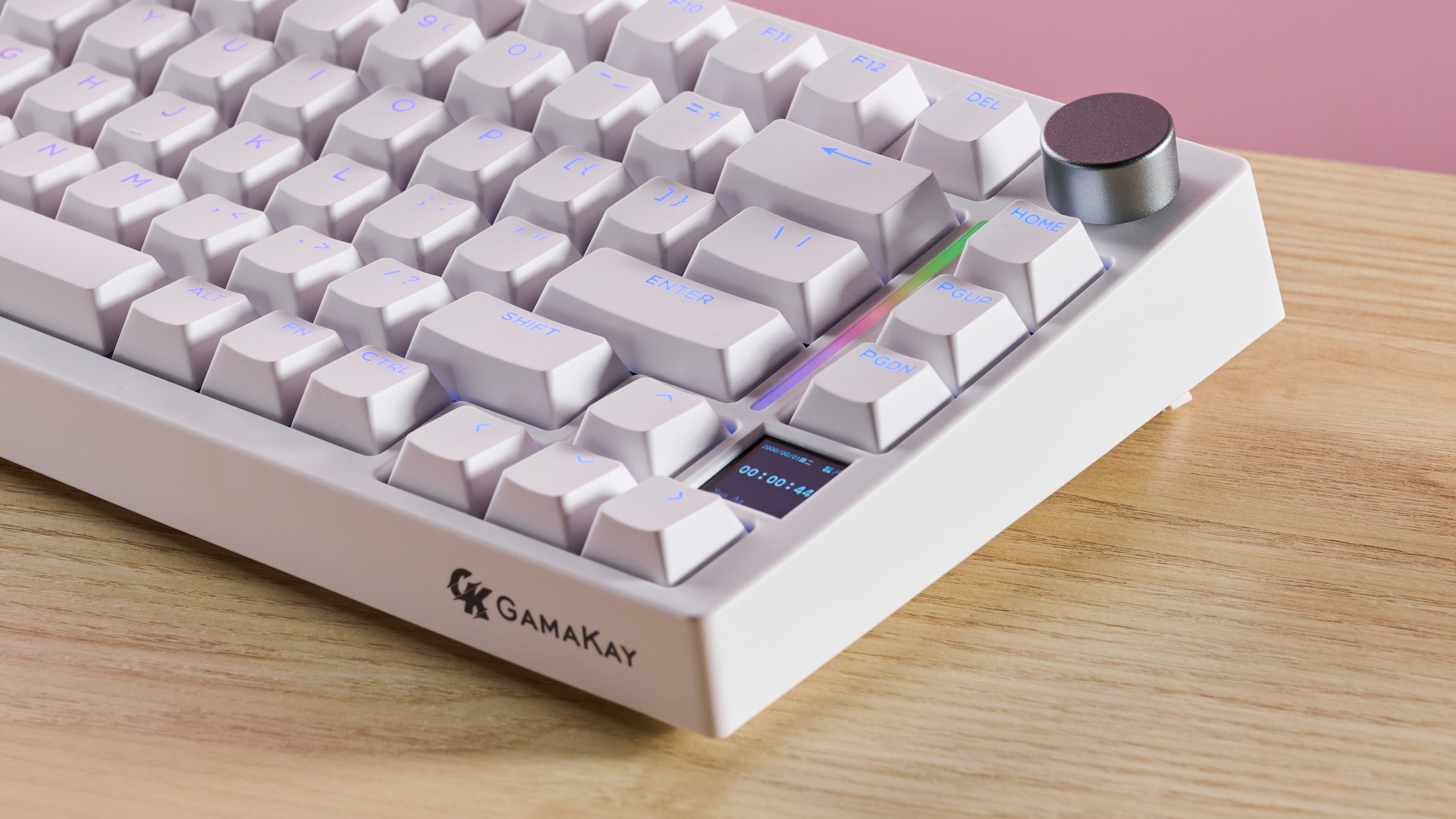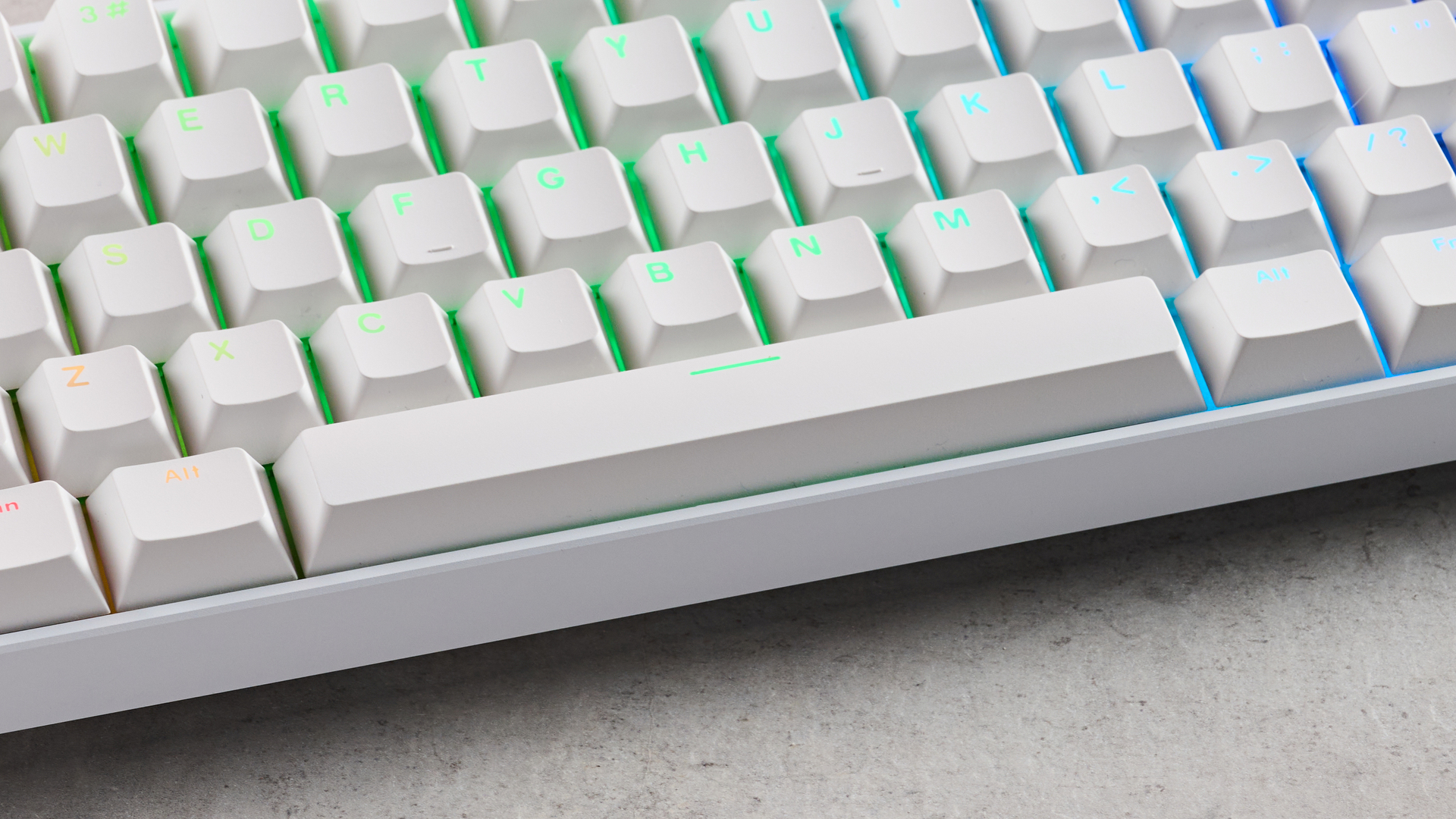Gamakay TK75HE V2 vs MonsGeek FUN60 Ultra: Analog boards have never been so affordable, but there’s one I think has the edge

Analog keyboards are usually the preserve of the well heeled, demanding copious amounts of money for the privilege, with even so-called budget offerings commanding a premium price tag in absolute terms.
Now, though, there are two new kids on the block aiming to shake up the market and prove that superior analog performance can be had for a relatively modest outlay.
Both the Gamakay TK75HE V2 and the MonsGeek FUN60 Ultra are compact units, promising the kind of premium experience you would expect of the best gaming keyboards, but without costing the earth. But which is the superior choice? Here’s my verdict on the board I prefer.

The TK75HE V2 feels great whether you're typing or gaming, while the 75% layout gives it the edge in terms of productivity over the Fun60 Ultra. The software lacks refinement, however, and I would've welcomed some form of wrist support for longer sessions.
Pros
- Well-priced
- Capable and satisfying performance
- Useful analog adjustments
Cons
- Usability issues with software
- Limited integrated display
- Needs wrist support

Although you'll be hard-pressed to notice an improvement over Hall effect models, the TMR switches in the FUN60 Ultra still perform superbly. As with the TK75HE V2, though, there are some software issues and the lack of wrist support is noticeable after a while.
Pros
- Great build quality
- Fantastic snappy performance
- Very well priced
Cons
- Clunky device switching
- Not the easiest software to use
- Bizarre connectivity switch placement
Gamakay TK75HE V2 vs MonsGeek FUN60 Ultra review: specs
| Header Cell - Column 0 | Gamakay TK75HE V2 | MonsGeek FUN60 Ultra |
|---|---|---|
Price | $109.99 / £85 / AU$176 | $89.99 / £75.59 / AU$142.54 |
Layout | 75% | 60% |
Switch | Analog (Hall-effect magnetic) | Analog (TMR) |
Programmable keys | Yes | Yes |
Dimensions | 12.8 x 5.4 x 1.1 inches / 325 x 136 x 28mm | Not stated |
RGB or backlighting | Yes (customizable) | Yes (customizable) |
Gamakay TK75HE V2 vs MonsGeek FUN60 Ultra review: price and availability

As mentioned, the main attraction of both the TK75HE V2 and FUN60 Ultra is their very competitive pricing; no other analog keyboards offer so much for so little. The TK75HE V2 costs $109.99 / £85 / AU$176 while the FUN60 Ultra costs $89.99 / £75.59 / AU$142.54. Both are available now in white and black colorways.
Both also come with detachable USB cables and both are hot-swappable. However, both lack wrist support, which is something many top-tier gaming keyboards provide.
In terms of raw price, then, the FUN60 Ultra has the edge. But being the cheapest isn’t always the same as offering the best value. After all, the TK75HE V2 has a larger layout, so you would expect this fact alone would factor into its increased expense.
This is true to an extent, but it turns out that actually, the FUN60 Ultra is the better value of the two. For a start, it has wireless connectivity, and not just 2.4GHz: it also supports Bluetooth. Meanwhile, the TK75HE V2 is wired only. What’s more, the FUN60 Ultra features TMR rather than Hall effect switches, which are considered superior in terms of precision – but more on that later.
Sign up for breaking news, reviews, opinion, top tech deals, and more.
Gamakay TK75HE V2 vs MonsGeek FUN60 Ultra review: design and features
Both keyboards have a great design, with both adopting sleek and understated appearances, although the RGB lighting adds plenty of vibrancy to each unit.
The ergonomics of both boards is also commendable. I found them quite comfortable to use despite their lack of wrist support – although I still would’ve preferred some in both cases for longer sessions.
As previously mentioned, both keyboards are compact, although naturally the FUN60 Ultra is smaller thanks to its 60% layout. However, the FUN60 Ultra is quite a bit heavier than the TK75HE V2, which may be an asset or a drawback depending on your preferences.
However, the TK75HE V2 has a larger 75% layout, which is better for those who also plan on doing some productivity as well as gaming. Meanwhile, the lack of arrow keys on the FUN60 Ultra was something I really missed, even when gaming; and not being able to navigate pages or the cursor is something I personally lament.
What’s more, this larger format also means the TK75HE V2 gets a volume wheel, which is well notched and smooth to operate, whereas the FUN60 Ultra misses out on one altogether.

Both keyboards feature PBT keycaps, which feel every bit as premium as you would expect, although unfortunately neither are labelled with their respective Fn shortcuts, which means referring to each’s manual.
Perhaps the biggest design mishap comes from the FUN60 Ultra. The toggle for switching between wired, Windows, and Mac modes is located underneath the caps lock key, which means you have to remove it every time you want to switch. This is a baffling design choice and one that is every bit as inconvenient as you might imagine.
When it comes to software, both keyboards have all the usual customizations expected of modern gaming keyboards. Both have various remapping options, and both feature macro creators and RGB tweaks.
Since both have analog switches, naturally there are plenty of actuation adjustments available, too. However, both suffer from some usability issues that make them harder to navigate, which include unclear or absent explanations, rendering problems, and various impracticalities that make them less efficient than they should be.
Ultimately, though, both tools are stable and effective enough, and offer a surprising number of features and functions considering each board’s budget price tag.
Gamakay TK75HE V2 vs MonsGeek FUN60 Ultra review: performance

As with their designs, both the TK75HE V2 and the FUN60 Ultra are closely matched in terms of performance as well. To game with, the analog switches in both are responsive and precise, while offering a pleasing amount of resistance – vital in analog switches since it makes hitting specific actuation points easier.
Those on the FUN60 Ultra have a shorter travel, but are still relatively easy to control. But the main difference between the two, at least on paper, is the fact that the FUN60 Ultra uses TMR sensors in its switches, whereas the TK75HE V2 uses the more common Hall effect kind.
Ostensibly, TMR is superior as it’s more precise, while also consuming less power. In reality, however, I failed to notice much difference in either regard. However, this isn’t to say the switches of the FUN60 Ultra are bad. On the contrary, perform excellently, and I marginally prefer them to those in the TK75HE V2 – but I don’t believe this was due to their TMR technology.
They have a snappier and more tactile feel than those of the TK75HE V2, which puts me in mind of the best mechanical keyboard in this regard. The TK75HE V2, on the other hand, has heavier switches with greater dampening, as well as a longer travel which may well provide more control for some users.
Both are also great for typing, although in this regard I slightly prefer the TK75HE V2, which, coupled with its aforementioned larger layout, makes it more amenable for productivity purposes.
Gamakay TK75HE V2 vs MonsGeek FUN60 Ultra review: verdict

Choosing a winner between these two isn’t an easy task. Both demonstrate that analog keyboards needn’t be prohibitively expensive, yet can still offer a performance that’s not far behind the best in class. Their design is also exemplary, with surprising levels of build quality and premium appeal in both.
In this closely run race, ultimately I have to side with the FUN60 Ultra, thanks to its marginally superior feel when it comes to playing games. I would’ve preferred a larger layout for productivity purposes, and in that regard I would err towards the TK75HE V2 if I was doing more work than play. But from a gaming-oriented perspective, the FUN60 Ultra just about takes this one.
You might also like

Lewis Maddison is a Reviews Writer for TechRadar. He previously worked as a Staff Writer for our business section, TechRadar Pro, where he gained experience with productivity-enhancing hardware, ranging from keyboards to standing desks. His area of expertise lies in computer peripherals and audio hardware, having spent over a decade exploring the murky depths of both PC building and music production. He also revels in picking up on the finest details and niggles that ultimately make a big difference to the user experience.
You must confirm your public display name before commenting
Please logout and then login again, you will then be prompted to enter your display name.